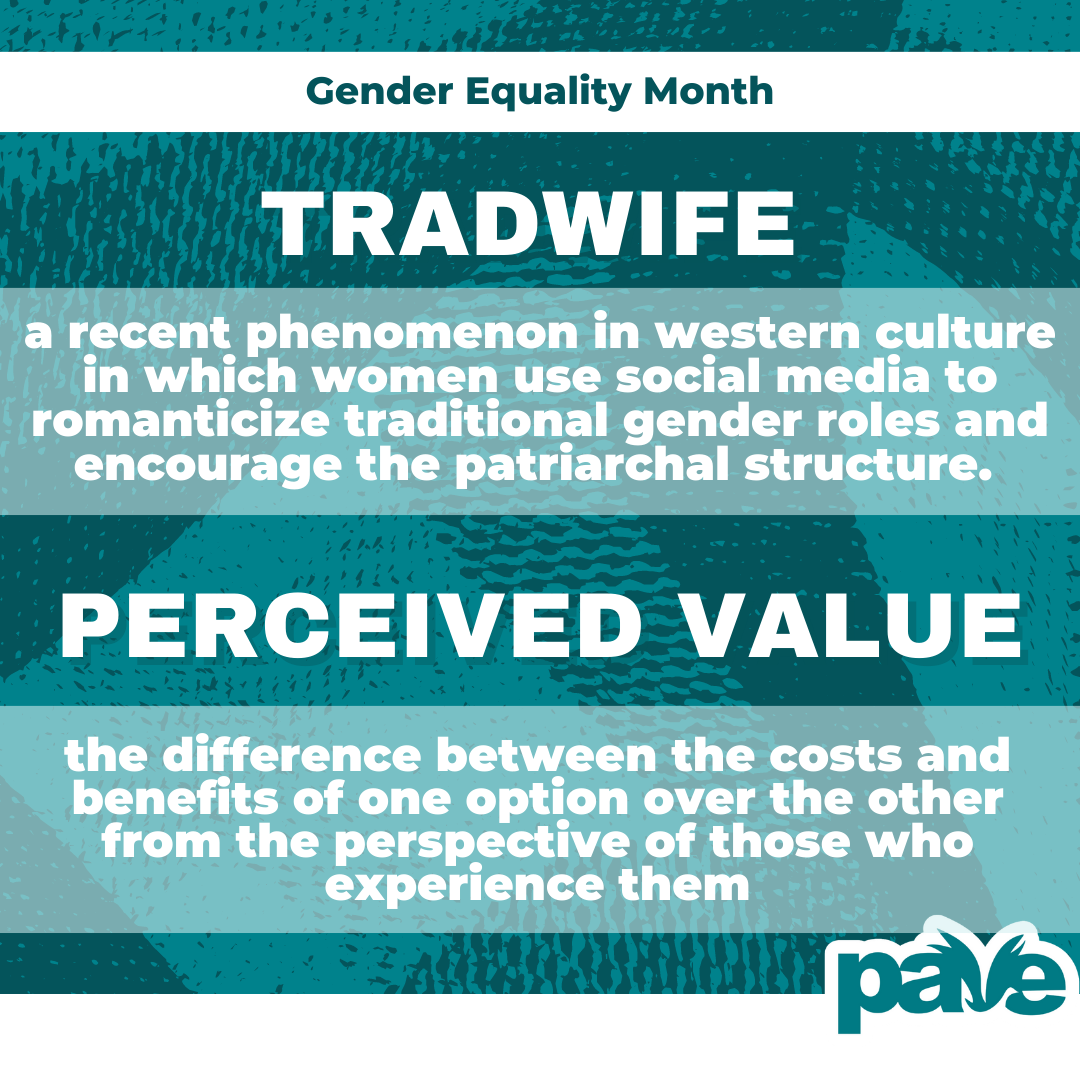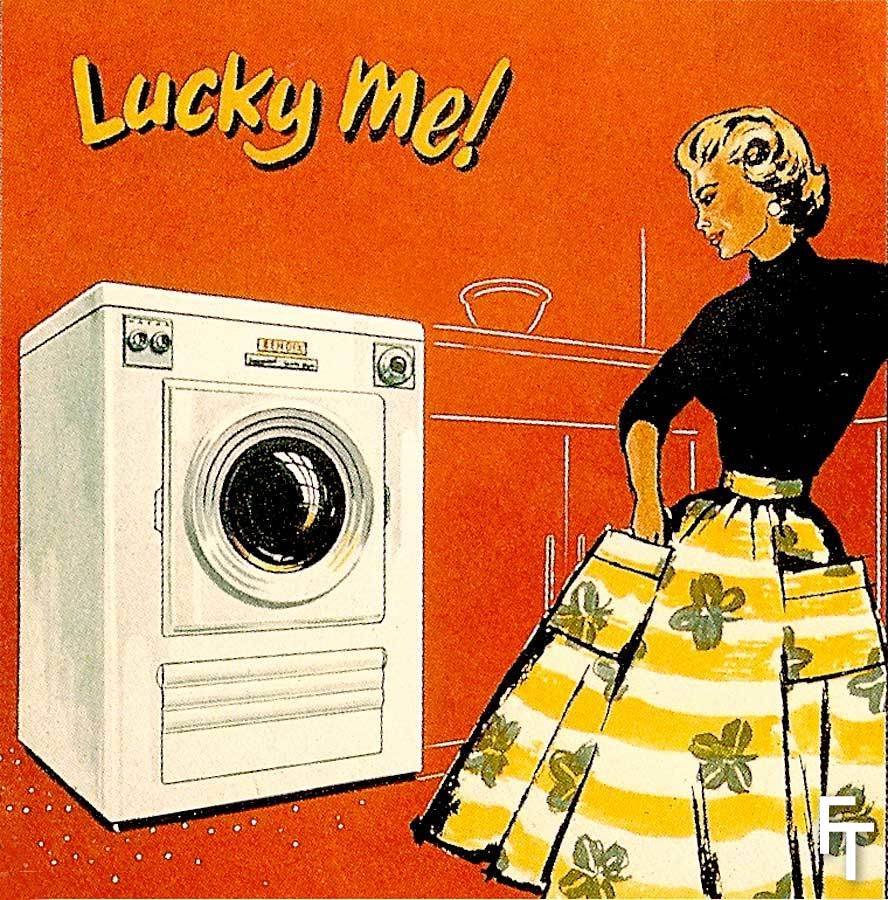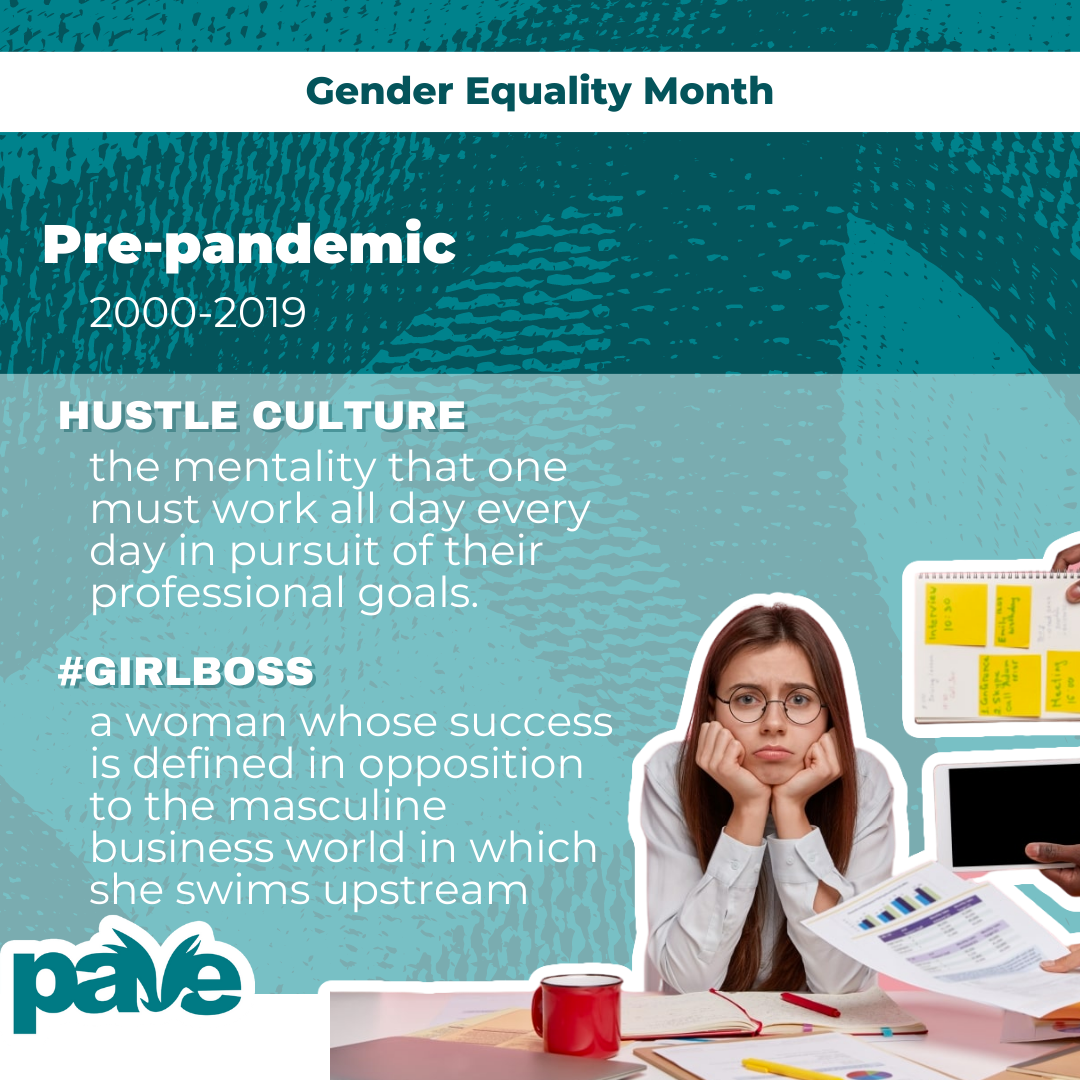What is a “Tradwife”?
A few weeks ago, it seemed as though all of Twitter was talking about a single Tik Tok. It was a montage of a woman cooking and cleaning as she donned a Marilyn Monroe-esque blonde bob and an apron. The text on the screen read “While the world continues to condemn traditional wives, I’ll continue to live my truth.” All of the replies and quote retweets, as she predicted, condemned her and what they referred to as “tradwives.” So, what is a tradwife?
The term tradwife refers to a recent phenomenon in western culture in which women use social media to romanticize traditional gender roles and encourage the patriarchal structure. So where does that come from? And why have women moved away from the traditional housewife role in recent decades in the first place?
Let’s discuss the history of the perceived value of the American housewife.
In the years after the American Revolution, the idea of a “home” was becoming more and more valued. The home, especially for the middle class, was no longer just a place to sleep and eat, but a place of physical and emotional safety from the harsh world. With the rise of the perceived value of the home came the rise of the perceived value of the homemaker. As the nation got its footing, the women who stayed home and raised their children were highly respected as the moral center of the culture who were raising the members of the new nation.
In the nineteenth century, the duties of the housewife were often labor-intensive and required high skill. Home appliances were nothing like they are now, meaning that tasks like laundry and using the stove were significantly more difficult and time consuming. Those in the upper-middle class often had workers who helped them complete these tasks, but they still invested the majority of their time into housework. Prior to the wide-spread access to commercially produced food products in 1890, women had to make the majority of their food themselves. In a similar vein, women also frequently handmade all or the majority of their family’s clothing.
In short, the American housewife was highly respected during this time period, which was reflected in the media of the time. The literary trope “The Notable Housewife” was a trope that portrayed them as admirable, wise, and jacks-of-all-trades. However, with the turn of the century, this sentiment would shift.
The advent of the labor-saving device resulted in a massive decline in the perceived value of the housewife. A labor-saving device is a product that makes a task easier. A washer and dryer. An electric oven. Boxed mac and cheese.
In the late nineteenth and early 20th century, American consumers began to have increasing access to advanced technology and home appliances. With the advent of each new device came less skill required to complete the task. Rather than fetching the water, mixing the soap, scrubbing the garments, and hanging them to dry, now all laundry day took was loading a machine and pressing a button. Unless, of course, the device broke or stopped working. Then, the device required too much and too niche of a skill to fix alone, requiring the family to rely on experts to repair them.
The labor-saving device also meant that the upper-middle class no longer needed additional help inside the home. The homemaker went from having coworkers and a full day of physically and creatively stimulating, to a day of general solitude. In “Just A Housewife” The Rise and Fall of Domesticity in America, Glenna Matthews writes that housework “continued to fill womens time while it starved their brains.” Housework still took up the entire day, but it was significantly less rewarding and was seen by society as less skillful.
This shift of the perceived value of the housewife was also represented in the media. The trope of the notable housewife was replaced by the “smother,” also known as the overbearing and meddling housewife. Or, she was portrayed as dumb and meek, similar to the modern trope of the “trophy wife”, but without the glamor. The image of the dumb housewife was perpetuated by advertisements for household products. She was always told that she was doing something wrong or that if she didn’t do something, she would shame her family. The Ladies Home Journal encouraged women in 1938 to “Be glad you're dumb about all these earth-shaking questions….The great problems of the world are all Greek to you—but the problems of your home and family and community are right down your alley. Be glad you're dumb while your husband is saving the world—be brave and you can save the home." This is a stark contrast to the wise housewife prior to the labor-saving device.
However, a shift would be coming yet again. In 1941, the United States joined World War II and a large chunk of men were drafted. This left vacancies in many jobs. Additionally, the need for materials rose during the war. As a result, women were asked to join the workforce. While some women worked prior to the war, it was more common among those of lower socio-economic status. After the war, six million women got jobs in factories, three million volunteered for the Red Cross, and an estimated 350,000 served in the military. Once men returned from war, many women left the workforce, but a significant number remained. Women had proven that they could not only function, but thrive, at their jobs and as the next decade came and went, more women were in the workforce than before the war. 35% of women participated in a full or part-time job during the postwar era.
MILKMAN, R. (1987). GENDER AT WORK: THE DYNAMICS OF JOB SEGREGATION BY SEX DURING WORLD WAR II. URBANA: UNIVERSITY OF ILLINOIS PRESS
The Equal Pay Act of 1963 was passed to address and correct the gender pay gap in fields such as commercial production. Over the next few decades, women would gain more rights in the workplace and as a result, the number of women working increased. In the 1970’s, 20% of married women who had a child under the age of one-year were working. By the 2000’s that number was an estimated 62%. Today, an estimated 57% of women participate in the workforce.
During the 60’s and 70’s, divorce rates skyrocketed. Now that many women had their own income, or increased ability to get a job if they chose to, they had more resources to leave abusive or unloving marriages. Additionally, as educational opportunities increased for women, generations of girls began to prepare for higher education after high school rather than marriage.
As seen throughout the 20th century, the perceived value of tasks associated with a housewife decreased significantly. In modern times, the working woman has still been expected to maintain the household. While some households divide the labor, many women still bear the burden of the majority of the household chores despite both partners working. Being at a high position in your job is seen as a feminist success and the idea of the #GirlBoss has been increasing in value, as has hustle culture. Things like cooking, baking, and sewing are seen more as hobbies rather than life-skills or chores. The perceived value of our contribution to society prior to the pandemic was measured by the status of one’s job. The life of a housewife has begun to be seen as easy and pampered. Pop culture, such as The Real Housewives franchise, helps to push this narrative. In reality, the average modern housewife’s day consists of chores, errands, chauffeuring, and engaging in tasks like loading and folding laundry and washing dishes— significantly less creatively fulfilling tasks than cooking, sewing, or other homemade projects.
The Coronavirus pandemic has shifted the way most people view work. When many offices transitioned into work-from-home models, many people began to realize the benefits of staying at home and began to prioritize flexibility rather than job-status. The shutdown caused many to not only reflect on their life choices, but it gave them more time to invest into hobbies and other interests outside of work. Social media platforms like Tik Tok helped to romanticize the work-from-home model and other skills like cooking, baking, painting, sculpting, sewing, home DIY, and even cleaning. This began the phenomenon of “quiet quitting,” when people put in the bare minimum into their job and don’t put the energy into going the extra mile. The shutdown caused another shift in our perceived value of work: we are being less and less defined by our measurable contributions to society and there is a higher perceived value on being a well-rounded individual with hobbies and social connections.
To understand the tradwife, we need to understand the two variations, with the variations coming from opposite ends of the feminist perspective. The first and lesser recognized variation of a tradwife actually stems from feminism. Essentially, there has been an online trend of tongue-in-cheek longing to return to the traditional family structure due to the decreasing perceived value of work. The framework is that work is seen as a burden for survival, while hobbies and free-time are considered to be when we truly live, meaning that it is empowering to not be burdened by work. The women who preach this online do so semi-ironically, recognizing that there were obvious downsides to the traditional family structure, such as financial abuse and lack of representation, that caused women in the workforce to be a form of female empowerment. However, the ironic movement online still demonstrates that our values as a society are shifting away from our employment and financial contributions to society and towards personal fulfillment.
The second variation of the tradwife, and the one who causes greater concern, stems from anti-feminists who truly believe that a woman’s place is inside the home. Many of these women flock to social media to demonstrate their lifestyle and preach traditional family values, such as the woman mentioned at the beginning of this article. These women use social media to romanticize these activities and this lifestyle, filming aesthetically pleasing Tik Toks of them baking or satisfying videos cleaning their oven with catchy music layered on top. They try to push the narrative that they are more fulfilled than the working or the feminist woman because they are “fulfilling what their husbands truly want.”
There is nothing wrong with being a stay at home wife or husband, in fact, it is admirable and should be more valued by our society than it currently is. As we are starting to collectively agree, your source of income should not be your defining identity and consume your life completely because things like hobbies and family time can be more fulfilling for many people. However, to claim that a woman’s place “is in the home,” coupled with portraying this lifestyle as though there are no downsides, can cause real harm.
First of all, the take completely ignores why many women didn’t and don’t want to be housewives: financial abuse. It was very common, and still is, that the breadwinner gives their stay-at-home partner an allowance. In some toxic situations, going over this allowance can result in abuse. Not only is the threat of abuse looming, but an allowance can also feel infantilizing for many women.
Secondly, encouraging women to leave the workforce means that you’re also encouraging all institutions, organizations, and companies to have less women contributing to the conversation, which can get scary for women where policies and human rights are concerned. Having women in the workforce means that women’s needs get represented.
Additionally, the women on social media preaching the tradwife lifestyle are ignoring something crucial: they are contributing to the family through a job, because being a social media personality is itself a job. Expressing oneself via social media is a fulfilling creative endeavor and can be incredibly financially lucrative, meaning that tradwife influencers are not actually living the life they are encouraging.
Lastly, the activities demonstrated in these videos, primarily baking, cooking, sewing, and home DIY are mainly seen as hobbies now, meaning that they provide creative fulfillment and are not always deemed as chores. Unlike the women tradwife influencers are imitating, they do not need to be baking their own bread or sewing up their torn dress for survival purposes. If a tradwife influencer is too busy or overwhelmed to bake her own bread, she can buy it herself at any corner store.
All in all, the perceived value of the housewife has undulated throughout history and will continue to do so. Homemaking should be highly valued and not seen as a lesser contribution to society. We shouldn't be judging someone’s contribution to society on whether or not they receive a paycheck at the end of the week. Everyone, regardless of gender, should have time outside of work to enjoy themselves and find fulfillment. However, to portray it as though the tradwife lifestyle is the ideal is far from the truth and overlooks the abuse inflicted on many women from the era they are referencing. To preach the tradwife lifestyle, no matter how empowering you frame it, is dangerous for women.





